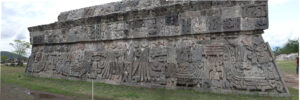

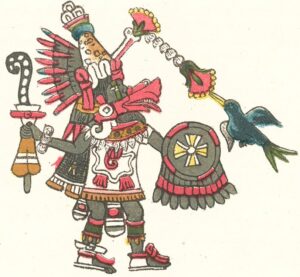
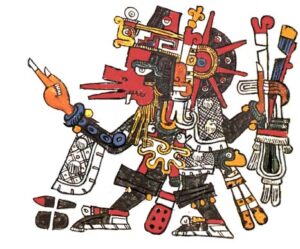

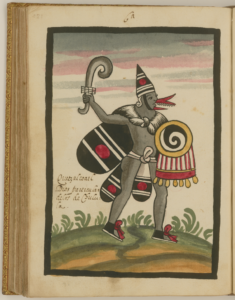



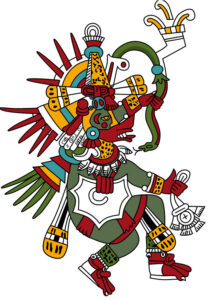
Quetzalcoatl, often referred to in the context of your question as “Quexalcote,” is one of the most important gods in the pantheon of Mesoamerican religions, particularly among the Aztec and Toltec cultures of ancient Mexico. The name “Quetzalcoatl” is Nahuatl and can be translated as “Feathered Serpent” or “Quetzal-feathered Serpent.”
Key Aspects of Quetzalcoatl:
- Creator God: Quetzalcoatl is often considered a creator god and is associated with creation myths, including the creation of mankind. He is one of the major deities of the Aztec, where he was related to gods of wind, and was believed to be a bringer of life and culture.
- Cultural Hero: Beyond his role as a deity, Quetzalcoatl is also seen as a cultural hero. He is credited with the introduction of many important cultural and practical aspects to ancient Mesoamerican societies, such as the calendar, agriculture, and the arts.
- Dual Nature: Like many Mesoamerican deities, Quetzalcoatl is often depicted as a complex figure with both benevolent and malevolent aspects. He is associated with life-giving, but also has connections to the underworld and death.
- Iconography: Quetzalcoatl is commonly depicted as a serpent adorned with the beautiful, vibrant feathers of the quetzal bird, which are a symbol of wealth and preciousness. This iconography emphasizes his status as a divine entity.
- Historical and Cultural Influence: The myth of Quetzalcoatl includes a prophecy that he would return from the east, which became significant during the Spanish conquest of Mexico. The Aztec emperor Moctezuma II initially believed the Spanish conquistador Hernán Cortés might be Quetzalcoatl, which influenced his responses to the Spanish arrival.
- Worship and Temples: Temples and rituals dedicated to Quetzalcoatl were prominent in many Mesoamerican cities. The Pyramid of the Feathered Serpent at Teotihuacan and the Temple of Quetzalcoatl at Xochicalco are notable examples.
Quetzalcoatl’s influence extends beyond the religious and into the cultural and historical narratives of Mesoamerican peoples, making him a central figure in studies of these civilizations. His legacy is evident in the continued interest and reverence for his figure in modern Mexican culture and heritage.